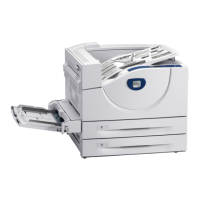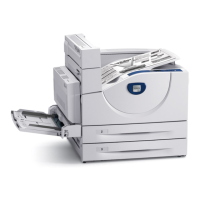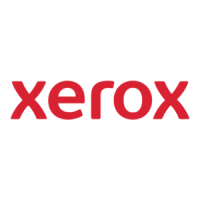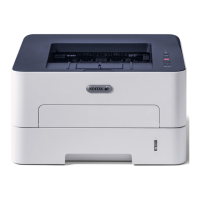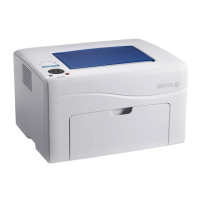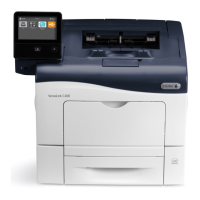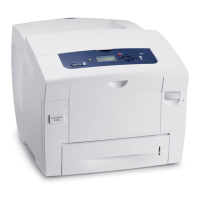1.
XEROX
550
COMPUTER
SYSTEM
INTRODUCTION
The Xerox 550
general-purpose,
digital,
computer system
accommodates a
variety
of
scientific,
business,
real-time,
and time-sharing
applications.
A system includes system
control,
basic processor,
I/O
processor, and main memory
(up
to
256K words) with two ports. Each major system
element performs asynchronously
wi
th respect
to
other
elements.
The basic system
can
be readi
Iy
expanded. Memory
access
paths
can
be increased from
the
basic two ports
to
a
maxi-
mum
of six ports.
Input/output
capabi
I ity
can
be increased
by adding more
input/output
processors (lOPs),
device
con-
trollers, and peripheral
devices.
The basic processor
(BP)
has
an
extensive instruction
set
that
includes
floating-point
instructions.
The multiaccess memory units, with
interleaving,
afford a
high level of system performance. Main memory
can
be
expanded in
16K
word increments
to
a maxi
mum
of 256K
words. Address
interleaving
may be performed between
memory units of like
size.
The number of ports
to
each
memory unit
can
be expanded
to
allow independent
ac-
cess
to
memory
by
up to six "processor clusters"
(i.e.,
functional groups).
Processor clusters
are
the
grouping of two or more functions
{such as a basic processor,
an
I/O
processor, and
inter-
faces} on a common bus. Clustering permits processors
to
share common faci
Ii
ti es,
e.
g.,
buses and memory i
nter-
faces. Therefore,
the
hardware is I ess redundant,
hence
less complex, resulting in more reliabi lity
at
a lower cost.
There
are
multiple combinations of functional groups from
which to
select.
Existing Sigma
5-9
programs may be run on
the
system.
The upward compati
bi
I i ty of
the
comprehensi
ve,
mod-
ular software (assemblers, compilers, mathematical and
utility
routines, and
application
packages) eliminates
reprogramming.
Features have been incorporated in this design
to
enhance
overall system
reliability,
maintainability,
and
availability.
Centralized
switches for system repartitioning may permit
faulty units, or
an
entire
subsystem,
to
be isolated for
diag-
nosis or
repair
whi Ie the primary system continues
operation.
Parity
checking
is performed on
each
byte of information
for most system interfaces and internal control signals. Most
failed
instructions
are
automatically
retried,
and
uninter-
rupted processing continues. The only
apparent
effect
may
be
an
entry in the error log. In
the
event
an
error is
irre-
coverable,
there
are
error storage registers
that
return
com-
plete
data
on the
fault
and
the
status of the system
at
that
point.
GENERAL
CHARACTERISTICS
The following system features and
characteristics
permit
efficient
operation in
general-purpose,
multiprocessor,
time-sharing,
real-time,
and multiuse environments:
• Word-oriented memory
(32-bit
word plus
parity
bit
per byte)
that
can
be addressed and
altered
as
byte
(8-bit),
halfword
(2-byte),
word
(4-byte),
and
double-
word (8-byte)
quantities.
• Memory
expandable
to
256K words
(K
==
1024) in mod-
ular units of
16K
words
each.
•
Indirect
addressing with or without postindexing.
• Displacement index registers,
automatically
self-
adjusting for
all
data
sizes.
• Immediate operand instructions for
greater
storage
efficiency
and increased speed.
• Four blocks of
16
general-purpose
registers for address-
ing,
indexing, and accumulating. Multiple registers
permit rapid
context
switching.
• Hardware memory mapping, which
virtually
eliminates
memory fragmentation and provides dynamic program
relocation.
• Memory
access
protection
for system
aOO
informaTion
security
and
protection.
• Memory
write
protection within memory units to
prevent
inadvertent
destruction of
critical
areas
of memory from
any
processor cluster.
• Watchdog timer to assure nonstop operation.
• Real-time priority interrupt system with automatic
iden-
tification
and priority assignment, fast response
time,
and
14
internal and up to
48
external levels
that
can
be individually armed,
enabled,
and triggered by
program
control.
• Instructions with long
execution
times
can
be interrupted.
• Automatic traps for error or
fault
conditions, with
masking
capability
and
maximum
recoverability,
under
program
control.
• Power
fail-safe
for automatic shutdown and resumption
of processing in
event
of power fai lure.
•
Multiple
interval timers with a
choice
of resolutions
for independent ti
me
bases.
• Privileged instruction logic for program integrity in
multiuse environments.
Xerox
550 Computer System
